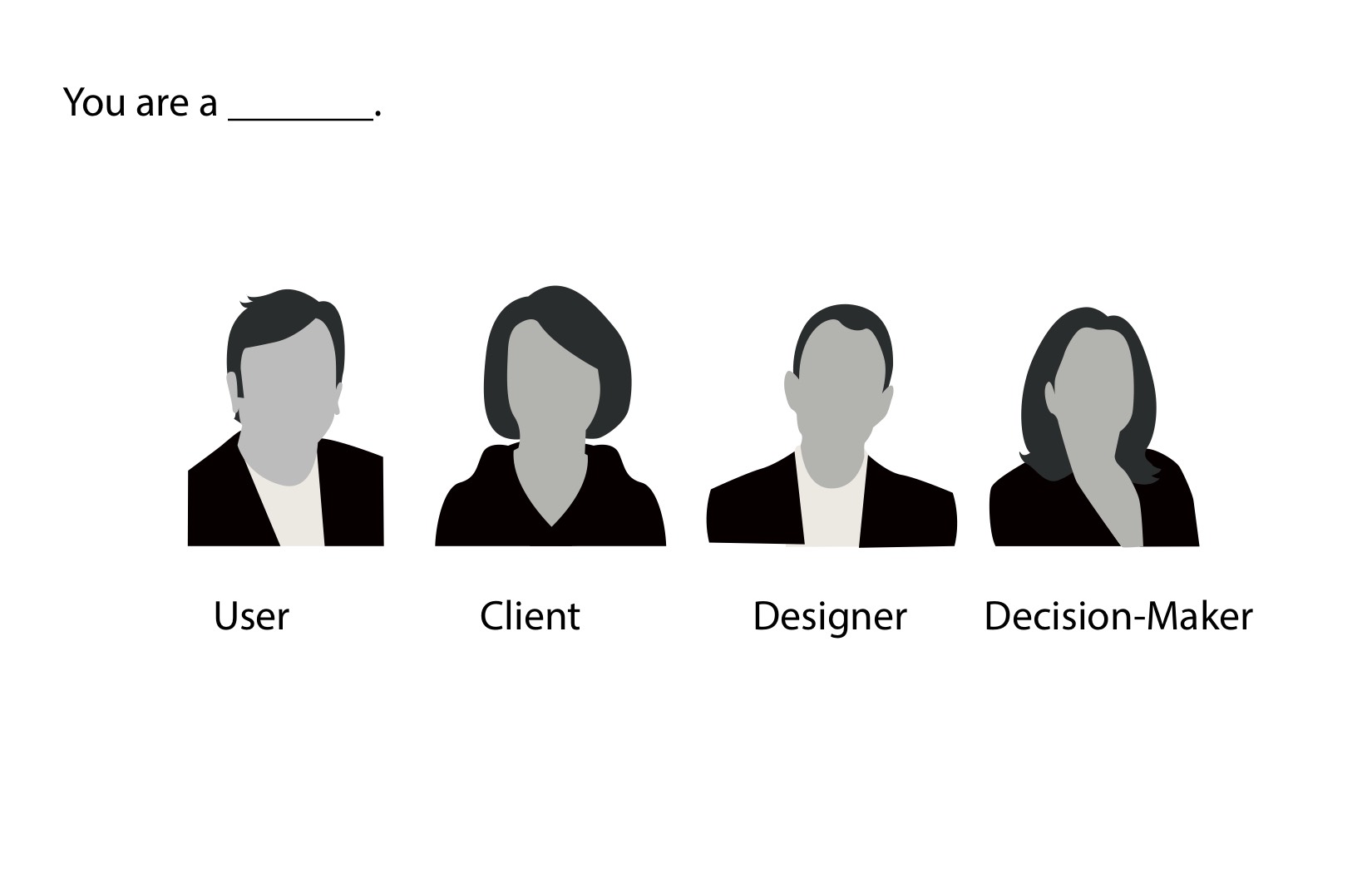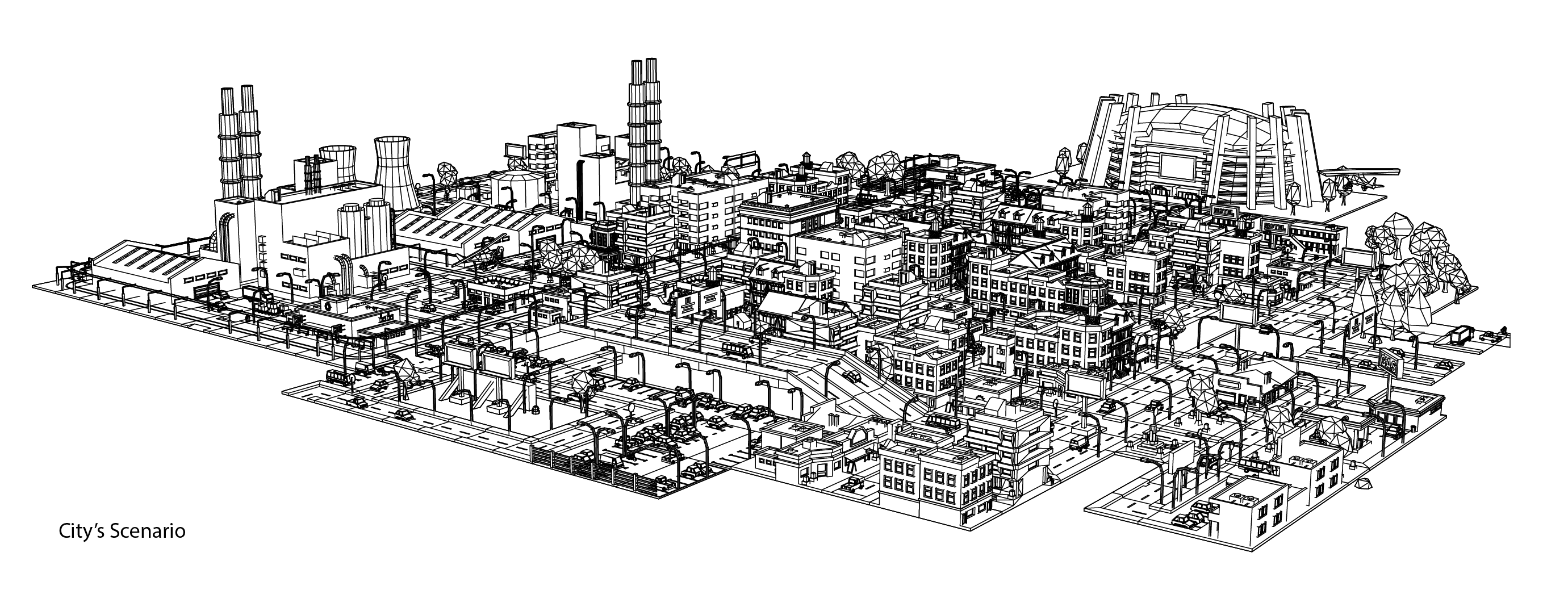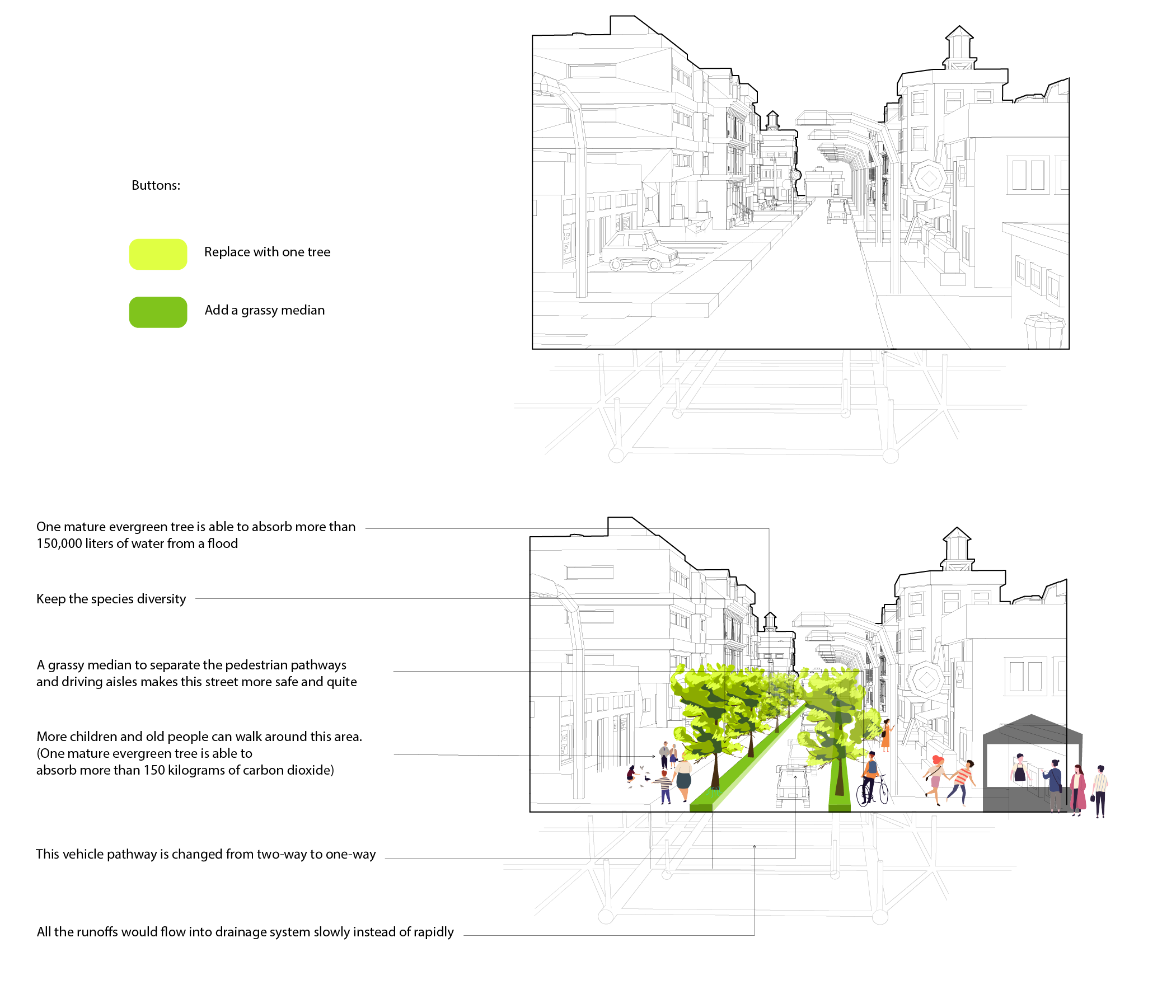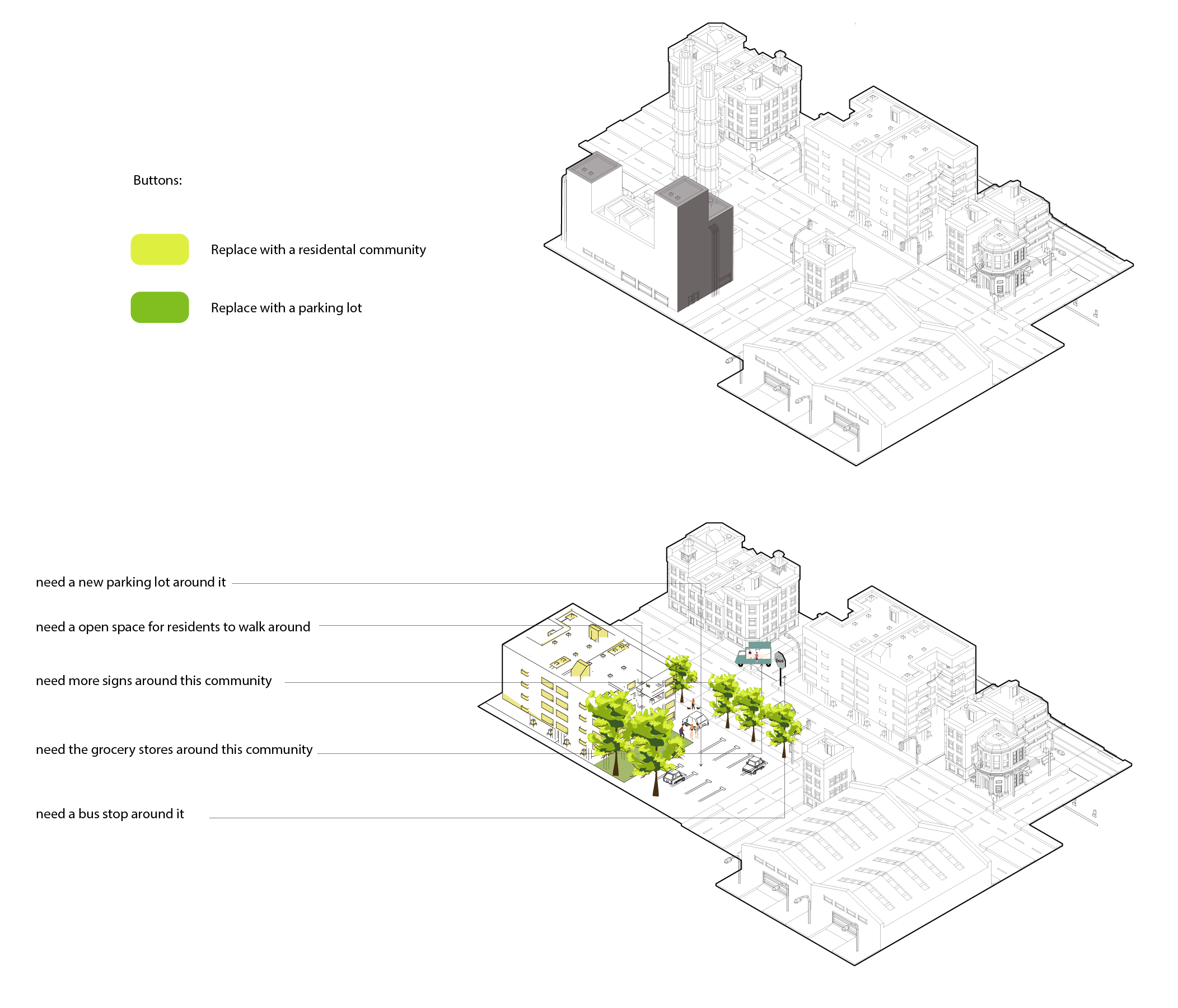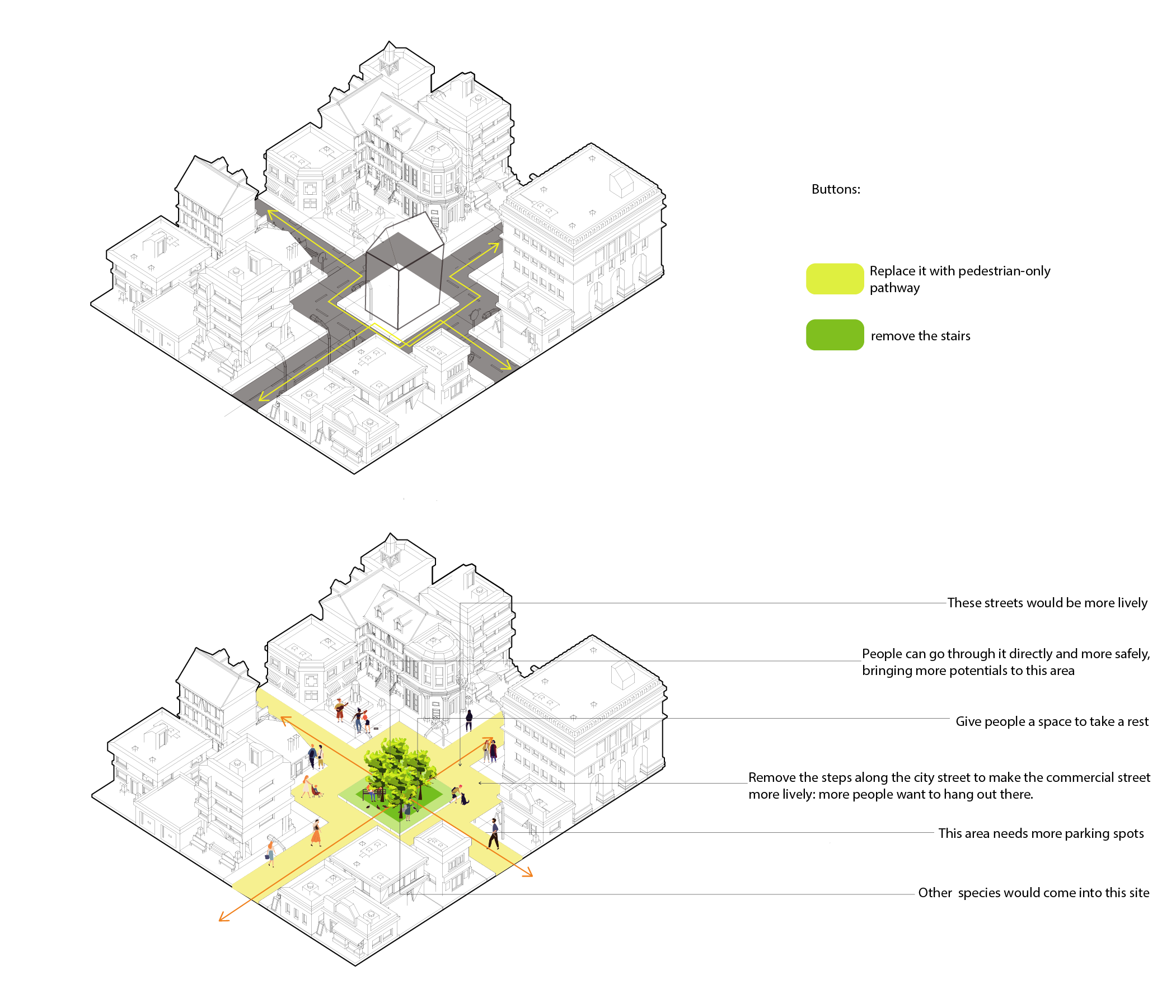Urban Simulation Game in Unity
A systems-based approach to urban simulation
…dividing the cow in half does not give you two smaller cows. You may end up with a lot of hamburger, but the essential nature of “cow” — a living system capable, among other things, of turning grass into milk — then would be lost.This is what we mean when we say a system functions as a “whole”. Its behavior depends on its entire structure and not just on adding up the behavior of its different pieces.” —Draper Kauffman (1980)
Introduction
In the early 1950’s, Borneo was affected by a serious malaria outbreak. The World Health Organization sprayed houses on the island with the insecticide DDT in order to kill the mosquitos responsible for spreading disease. While DDT was effective in reducing the number of malaria cases, there were some serious consequences.
Cats on the island began to die due to accidental ingestion of DDT. Fewer cats led to more rats. The rat population increased exponentially, causing the spread of rodent-related diseases.
This incident demonstrates the law of unintended consequences. Most actions do not work as simply as first-order cause-effect sequence of action and outcome. Rather, they look more like a chain of events: each chain generates a different and often unintended set of outcomes. If we want to make decisions with potentially large impact, we need to take into account the various possibilities that might arise as a result. By only looking at the first-order relationship between DDT and the mosquitos, the World Health Organization only considered one aspect of the system, not the whole system. The dramatic consequences of the Borneo cats show the importance of systems thinking, which is understanding that everything is interconnected, each part of the whole system somehow related to another.
Thesis Work
My thesis work aims to integrate systems thinking into urban planning and simulation. I plan to tackle this by designing an urban simulation game, consisting of a series of stakeholders, city elements, and modules in Unity that model various components of the city system. The game can simulate decisions in real time, with multiple stakeholders with different interests operating on the city at once.
This idea comes from my internship experience at Ray Dunetz Landscape Architecture this past summer. That was the first time I designed for clients and not for my own private (usually impractical) projects in studio. I found that different stakeholders often take a long time to make others understand what they are thinking, and this is expensive. Sometimes designers have to build a huge physical model to make clients point at specific locations they mean, and make all the residents vote to the places they’d like to keep. But still, people from different standpoints have different concerns, so it’s hard to make clients understand how a designer’s approach would increase the city’s potentials, or how this replacement would make the city integrated into a regional plan. Also, the clients feel that it is hard to describe their imagination of the land to the designers. Facilitating this is the purpose for this system: anyone can build a city based on their imagination. And people would not only see the scenario immediately, but also a series of consequent reactions at the same time. So the simulation would make it clearer why the designers would care about keeping these trees, or why local folks want to keep a grocery store instead of replacing it with a fancy retail store.
Game Narrative
Story / Setting
- You are a client/ user/ designer/ policy-maker (You should choose your role at the beginning of the game) walking around in the city, and there are some places you want to change and replace them with other functions by clicking buttons.
- Every decision you made has a series of consequent reactions, which even can influence a bigger system, and you can see these reactions immediately.
- Build your own city, whatever you like, even in an extreme way
- You would understand more other stakeholders’ standpoints in a direct way, which can reduce the expense of the process of dialogue amongst different stakeholders and also make the potentials and risks immediately visible by demonstrating the ripple effect of design decisions through this interactive game.
Stakeholder Interactions
Below, I present visualizations of various components and interactions in the city.
Unity Game Features
I now present several clips of interactions I have already implemented in Unity.
These interactions give an idea of what is possible to simulate in Unity. Building replacements can induce economic changes, as in my Providence property map project. The restaurant attraction causes changes in foot traffic and transportation. The planting of a tree improves the flooding situation, affecting an environmental aspect of the city.
The entire Unity game I have developed so far is available as a WebGL website in your browser at this link. You must open the game in full screen mode to properly play it.
It is also available as standalone program for Mac at this link. For the Mac version, I recommend the settings of 1440x900, very high.
The controls are as follows: ‘WASD’ for directional movement, ‘F’ to toggle flying, left mouse click to click on buildings, and space to jump. The ‘Toggle Water’ option turns on water, which is not on by default. The slider controls the height of the water. All other buttons should be self-explanatory. Note that the ‘Replace Restaurant’ feature on the main panel is experimental and may not work as intended for most building replacements.
This game is a very preliminary work in progress, with many features that need to be worked out, clarified, and added.
